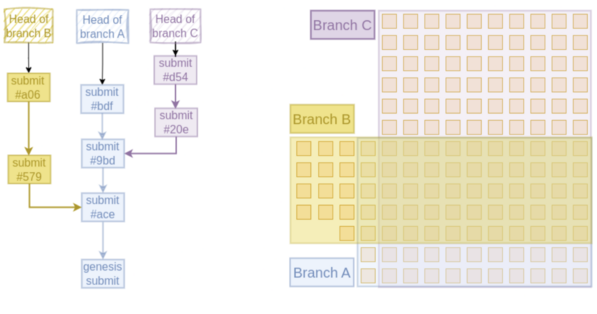Lakat
Lakat is a shared key-value database of branches and data buckets together with a peer-to-peer protocol that governs the modification of this database. Branches and buckets are added, merged, and pulled through a combination of the Proof-of-Review, broadcasting, and lignification processes. These contributions/changes (submit, review, token and storage) are made by contributors (content contributors, review contributors, token contributors and storage contributors).
A human, or machine can be a contributor while being resistant to Sybil Attacks via the Proof-of-Review process.
There is a graph homomorphism from graph S (submits) to graph B (branches), but not vice versa and there are no homomorphisms between S and graph D (buckets) or B and D.
Questions
How is Lakat complimentary to DGF?
- How is Proof of Review different than Proof of Staked Work?
What problems does Lakat solve?
How are incentives manged by Lakat?
- Integration with tokens as another layer.
What are the principles of Lakat?
How are Sybil attacks prevented?
- Proof-of-Review...DGF solves the Sybil Attack problem with the validation pool, reputation staking, dissuades bad actors with with retroactive reversals.
What is the relationship between bucket and branch?
- The relation between the elementary bucket object and the higher level branch object is not simply a many-to-one relation. Different branches may share some data buckets. See Figure 3 below.
References
- Horstmeyer, L. (2023). Lakat: An open and permissionless architecture for continuous integration academic publishing. arXiv preprint arXiv:2306.09298.
